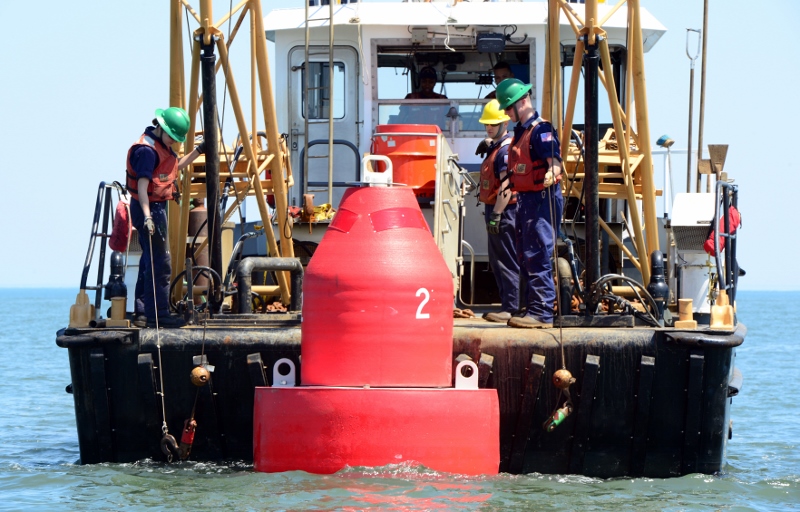The first-ever dredging of a long-shifting New Jersey inlet may show how the Corps of Engineers can integrate navigation projects with its burgeoning mission of East Coast beach replenishment.
This month a Coast Guard aids to navigation team from Cape May, N.J., re-established buoys in Little Egg Inlet, one of the last natural inlets uncontained by jetties along that reach of the coast. That marked the restoration of heavily used, usually dependable inlet that never fully recovered from hurricane Sandy in October 2012.
Historically the inlet had been left to move on its own, with the Coast Guard maintaining buoys or midway markers to show the best depths. But the landfall of Sandy shoveled lots of sand into the complex Little Egg Harbor-Great Bay estuary, and shoaling continued in the following years.

Uncontained by jetties, Little Egg Inlet has historically shifted from year to year. NOAA image.
Channels usually swept deep by the tide cycles were convoluted. Unlike after other great storms, the inlet never really straightened itself out, and in March 2017 the Coast Guard pulled its navigation aids, warning operators they would be using the waterway at their own risk.
“It’s consistently dynamic and changing there,” said Steve Rochette, a spokesman for the Corps’ Philadelphia District office.
New Jersey environmental officials estimated they would need to move 1 million to 1.5 million cubic yards of sand to restore navigation to 24’ minimum depth, from shoaling of 6’ or less.
The state had to obtain Corps permits which delayed the project, until in December 2017 an $18.4 million contract was awarded to Great Lakes Dredge and Dock Co., Oak Brook, Ill. Over the winter the contractor moved sand from the inlet north to the Holgate section of southern Long Beach Island, which had been heavily eroded by storms.
Senior Chief Petty Officer Chris Beahr, the officer in charge of the aids to navigation team Cape May, said the new ATON setup is better than before.
“When areas become too shallow to safely mark, we have to remove the aids to navigation so mariners know the area is not the same safe depth as before,” Beahr said in a prepared statement when the work was completed. “Buoys 1 and 2 are larger than the other buoys and will provide a better visual signal during the daytime as well as having brighter lights at night.”
Major beach replenishments in New Jersey use sand mined from designated borrow areas offshore. Now Corps officials are looking to incorporate the inlet sand into planning to maintain the island beaches.
“We do hope to use it for a borrow site,” said Rochette, adding that the Corps will be discussing that idea in depth with local stakeholders. “It’s renewable in the sense that there’s sand that drifts down” from the 18-mile island to the inlet, he said.
“Little Egg Inlet represents the best available sustainable and resilient source of future sand for the project,” Keith Watson, the Corps project manager for Long Beach Island, said in a joint statement with the Coast Guard. “We plan to use this additional sand borrow source for the critical southern end of Long Beach Island.”




